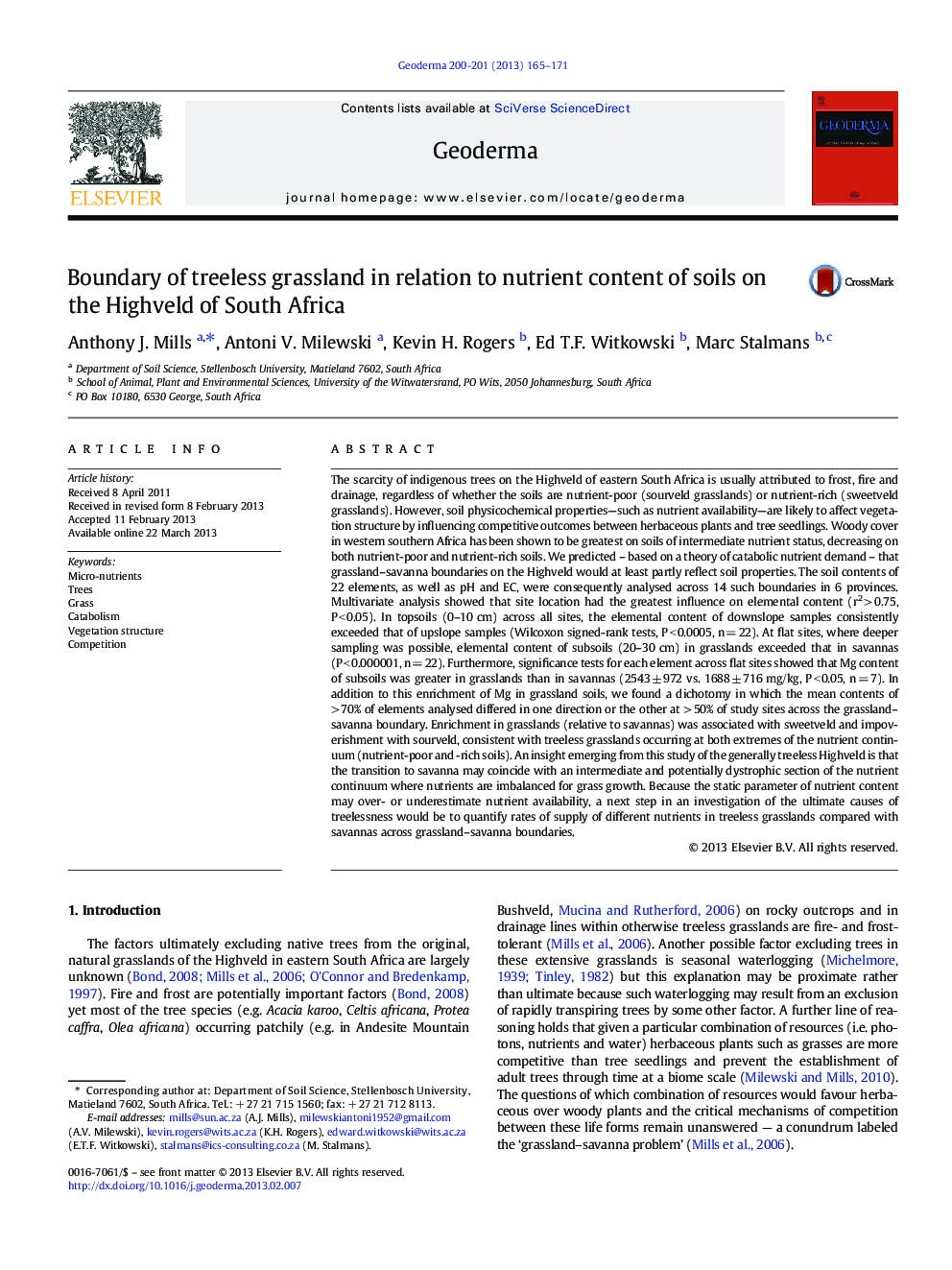| Article ID | Journal | Published Year | Pages | File Type |
|---|---|---|---|---|
| 4573528 | Geoderma | 2013 | 7 Pages |
The scarcity of indigenous trees on the Highveld of eastern South Africa is usually attributed to frost, fire and drainage, regardless of whether the soils are nutrient-poor (sourveld grasslands) or nutrient-rich (sweetveld grasslands). However, soil physicochemical properties—such as nutrient availability—are likely to affect vegetation structure by influencing competitive outcomes between herbaceous plants and tree seedlings. Woody cover in western southern Africa has been shown to be greatest on soils of intermediate nutrient status, decreasing on both nutrient-poor and nutrient-rich soils. We predicted – based on a theory of catabolic nutrient demand – that grassland–savanna boundaries on the Highveld would at least partly reflect soil properties. The soil contents of 22 elements, as well as pH and EC, were consequently analysed across 14 such boundaries in 6 provinces. Multivariate analysis showed that site location had the greatest influence on elemental content (r2 > 0.75, P < 0.05). In topsoils (0–10 cm) across all sites, the elemental content of downslope samples consistently exceeded that of upslope samples (Wilcoxon signed-rank tests, P < 0.0005, n = 22). At flat sites, where deeper sampling was possible, elemental content of subsoils (20–30 cm) in grasslands exceeded that in savannas (P < 0.000001, n = 22). Furthermore, significance tests for each element across flat sites showed that Mg content of subsoils was greater in grasslands than in savannas (2543 ± 972 vs. 1688 ± 716 mg/kg, P < 0.05, n = 7). In addition to this enrichment of Mg in grassland soils, we found a dichotomy in which the mean contents of > 70% of elements analysed differed in one direction or the other at > 50% of study sites across the grassland–savanna boundary. Enrichment in grasslands (relative to savannas) was associated with sweetveld and impoverishment with sourveld, consistent with treeless grasslands occurring at both extremes of the nutrient continuum (nutrient-poor and -rich soils). An insight emerging from this study of the generally treeless Highveld is that the transition to savanna may coincide with an intermediate and potentially dystrophic section of the nutrient continuum where nutrients are imbalanced for grass growth. Because the static parameter of nutrient content may over- or underestimate nutrient availability, a next step in an investigation of the ultimate causes of treelessness would be to quantify rates of supply of different nutrients in treeless grasslands compared with savannas across grassland–savanna boundaries.
► Savanna trees are excluded from grassland. ► Soil samples were taken along 14 savanna-grassland boundaries. ► A catenal effect was evident. ► In flat sites, grasses prevailed over trees on relatively nutrient-rich subsoils. ► Enriched and impoverished grasslands were sweetveld and sourveld, respectively.
